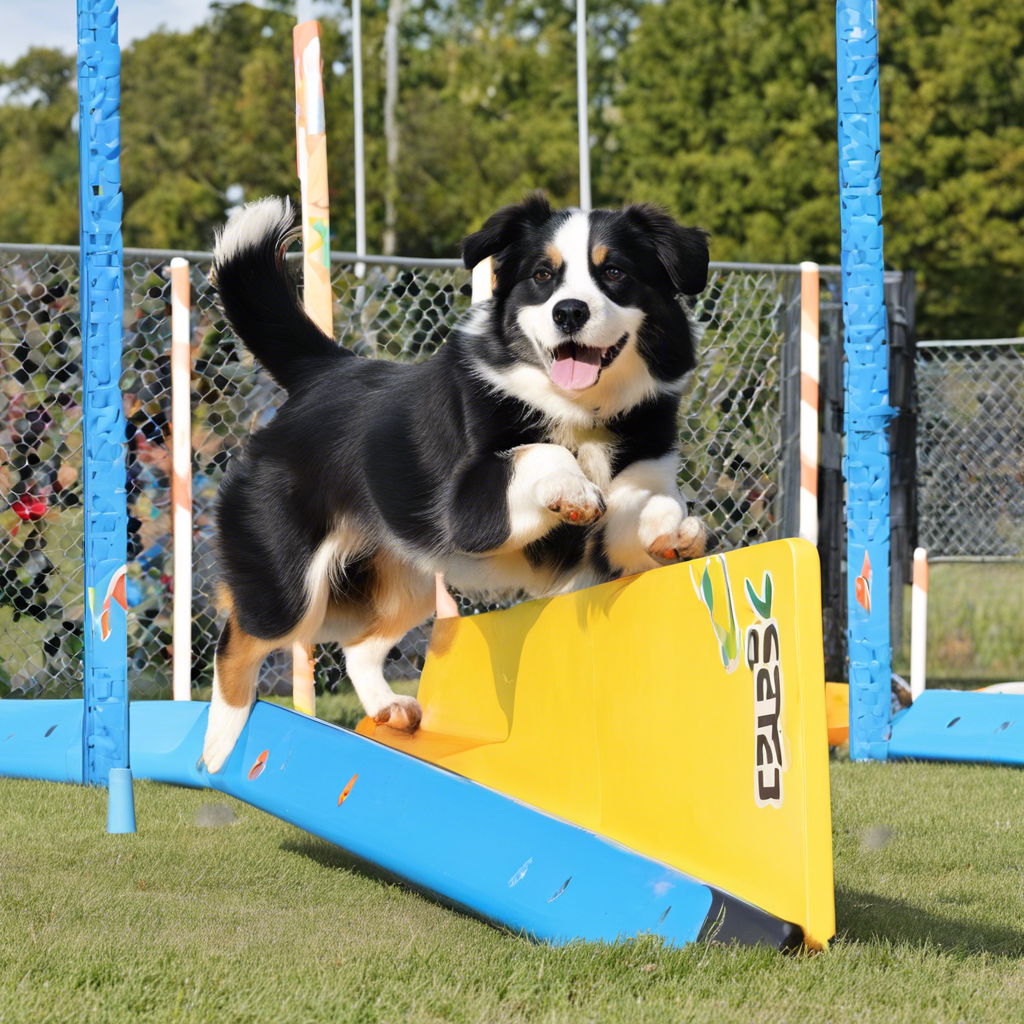Dog agility is a thrilling sport that showcases the remarkable bond between dogs and their handlers, involving a series of obstacles that test speed, precision, and teamwork. Among these challenges, the agility seesaw is an exciting yet technically demanding obstacle that requires a well-designed apparatus and proper training. In this article, we’ll dive into the world of dog agility seesaws, exploring the different materials and designs that make them essential components of the course.
The agility seesaw, also known as the teeter-totter or teeterboard, is a pivotal obstacle that adds an extra layer of complexity to the agility course. Its design is simple yet intricate, consisting of a plank that pivots on a central fulcrum, challenging the dog’s balance and coordination. When a dog runs across the seesaw, it must navigate the shifting surface and maintain its footing as it descends and returns to level ground. This obstacle is not only physically demanding but also mentally stimulating, requiring the dog to adjust its stride and body awareness.
##### Choosing the Right Materials:
Seesaws come in various materials, each with its pros and cons. Wood, a classic choice, is durable and provides good traction for dogs’ paws. It’s a popular option due to its natural feel and affordability. However, it may require regular maintenance to ensure a smooth surface. Rubber-coated seesaws offer excellent grip and are particularly beneficial in outdoor courses, reducing the risk of slipping, especially in wet conditions. This material is a favorite among trainers for its practicality and longevity. Additionally, aluminum seesaws have gained popularity due to their lightweight and rust-resistant properties, making them easy to transport and maintain.
For safety and comfort, some seesaws feature a non-slip surface or rubberized coating to enhance traction, ensuring the dog’s paws have a secure grip during the run. This is crucial as it prevents potential injuries and boosts the dog’s confidence, allowing for faster and more precise movements.
##### Design Considerations:
The seesaw’s design is crucial for both functionality and safety. The pivot point, or fulcrum, should be well-designed to provide a smooth, controlled pivot without wobbling. A precise mechanism ensures the seesaw operates smoothly, allowing the dog to maintain its balance during the transition from ascending to descending. The length of the plank is another critical aspect, as it determines the challenge level; longer planks require more coordination from the dog.
The height of the seesaw’s ends above the ground is also essential. A significant drop can intimidate dogs, so adjustable height options are beneficial for training, gradually increasing difficulty as the dog gains confidence. This flexibility in design caters to the diverse skill levels of canine athletes, ensuring a tailored challenge for each participant.
##### Training and Benefits:
Introducing dogs to the seesaw involves careful training to build confidence and familiarity. Starting with lower heights and gradually increasing the challenge helps dogs overcome their fears. Positive reinforcement and rewards are key to successful training, encouraging dogs to engage with the obstacle willingly. The seesaw enhances a dog’s problem-solving skills, coordination, and body awareness, contributing to their overall agility development.
Dog agility seesaws, with their diverse materials and designs, offer a captivating challenge for canine athletes. From wooden classics to innovative aluminum models, each seesaw provides a unique experience, catering to different training needs. By investing in well-designed equipment and employing effective training techniques, handlers can ensure their dogs excel in this exciting aspect of agility competitions.
Whether at local events or international championships, the agility seesaw remains a beloved and pivotal obstacle, capturing the essence of this dynamic sport. As the agility community continues to grow, the seesaw’s evolution in materials and design will undoubtedly keep pace, providing endless excitement for participants and spectators alike.

